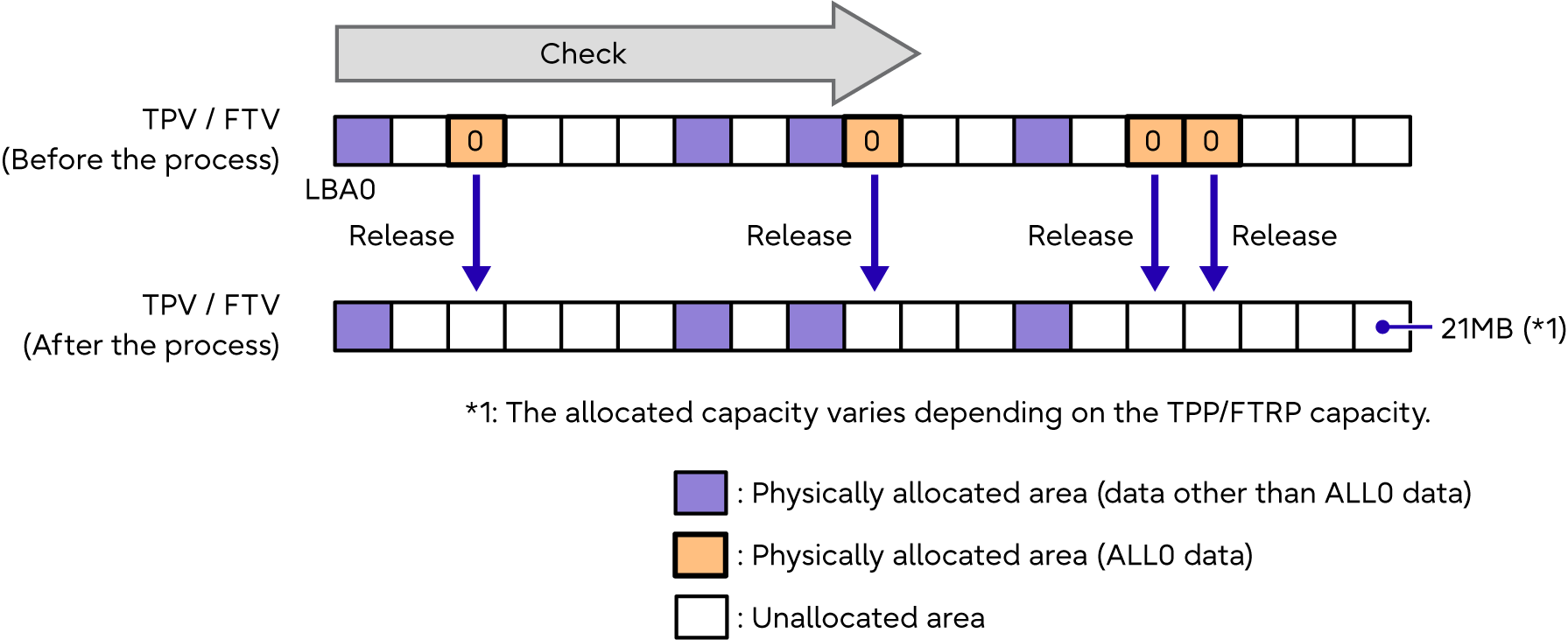TPV/FTV Capacity Optimization
TPV/FTV capacity optimization can increase the unallocated areas in a pool (TPP/FTRP) by changing the physical areas where 0 is allocated for all of the data to unallocated areas. This improves functional efficiency.
Once an area is physically allocated to a TPV/FTV, the area is never automatically released.
If operations are performed when all of the areas are physically allocated, the used areas that are recognized by a server and the areas that are actually allocated might have different sizes.
The following are examples of operations that create allocated physical areas with sequential data to which only 0 is allocated:
Restoration of RAW images from backup data
RAID Migration from Standard volumes to TPVs/FTVs
Creation of a file system in which writing is performed to the entire area
The TPV/FTV capacity optimization function belongs to Thin Provisioning. This function can be started after a target TPV/FTV is selected via ETERNUS Web GUI or ETERNUS CLI. This function is also available when the RAID Migration destination is a TPP or an FTRP.
TPV/FTV capacity optimization reads and checks the data in each allocated area for the Thin Provisioning function. This function releases the allocated physical areas to unallocated areas if data that contains all zeros is detected.

TPV/FTV capacity optimization may not be available when other functions are being used in the ETERNUS DX or the target volume.
For details on the functions that can be executed simultaneously, refer to Combinations of Functions That Are Available for Simultaneous Executions.
For details on the procedure of TPV/FTV capacity optimization, refer to "Web GUI User's Guide".



